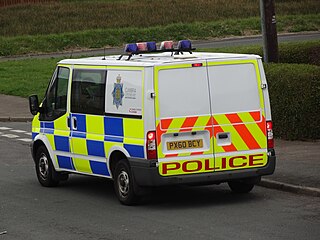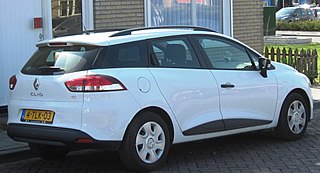This page is based on this
Wikipedia article Text is available under the
CC BY-SA 4.0 license; additional terms may apply.
Images, videos and audio are available under their respective licenses.

A train is a form of transport consisting of a series of connected vehicles that generally runs along a rail track to transport cargo or passengers. The word "train" comes from the Old French trahiner, derived from the Latin trahere meaning "to pull" or "to draw".

Sport utility vehicle (SUV) is a category of motor vehicles which combine elements of road-going passenger cars with features from off-road vehicles, such as raised ground clearance and four-wheel drive.

A van is a type of road vehicle used for transporting goods or people. Depending on the type of van it can be bigger or smaller than a truck and SUV, and bigger than a common car. There is some varying in the scope of the word across the different English-speaking countries. The smallest vans, microvans, are used for transporting either goods or people in tiny quantities. Mini MPVs, Compact MPVs, and MPVs are all small vans usually used for transporting people in small quantities. Larger vans with passenger seats are used for institutional purposes, such as transporting students. Larger vans with only front seats are often used for business purposes, to carry goods and equipment. Specially-equipped vans are used by television stations as mobile studios. Postal services and courier companies use large step vans to deliver packages.

A railroad car or railcar, railway wagon or railway carriage, also called a train car or train wagon, is a vehicle used for the carrying of cargo or passengers on a rail transport system. Such cars, when coupled together and hauled by one or more locomotives, form a train. Alternatively, some passenger cars are self-propelled in which case they may be either single railcars or make up multiple units.

A switcher or shunter is a small railroad locomotive intended not for moving trains over long distances but rather for assembling trains ready for a road locomotive to take over, disassembling a train that has been brought in, and generally moving railroad cars around – a process usually known as switching (USA) or shunting (UK). They do this in classification yards. Switchers may also make short transfer runs and even be the only motive power on branch lines and switching and terminal railroads. The term can also be used to describe the workers operating these engines or engaged in directing shunting operations.
Governments and private organizations have developed car classification schemes that are used for various purposes including regulation, description and categorization, among others. This article details commonly used classification schemes in use worldwide.

The First Call vehicle is a vehicle used in the funeral service industry. This type of vehicle is used to pick up the remains of a recently deceased person, and transport that person to the funeral home for preparation. This initial pickup is called the "first call", hence the name of these vehicles. While some funeral homes will use their hearse for these initial pickups, having vehicles for first calls and using the hearse solely for funerals reduces wear on hearses and makes the first call process more discreet.

A crossover SUV— also called crossover or CUV— is a type of sports utility vehicle (SUV) that uses a unibody construction. There are various inconsistencies about whether vehicles are considered crossovers or SUVs, therefore the term SUV is often used as a catch-all for both crossovers and SUVs.
Motor vehicles are often assigned into vehicle size classes for the purpose of taxation, insurance or dividing the market into segments.

Lambda is General Motors' mid-size 3-row crossover SUV automobile platform. It is largely derived from the GM Epsilon platform, which underlies the Chevrolet Malibu sedan and similar models.

The Mitsubishi Chariot is a small multi-purpose vehicle (MPV) manufactured and marketed by Mitsubishi from 1983 to 2003. Based on the SSW concept car first exhibited at the 23rd Tokyo Motor Show in 1979, the MPV derives its nameplate from chariots used by the ancient Greek and Roman Empires.

The early history of the automobile can be divided into a number of eras, based on the prevalent means of propulsion. Later periods were defined by trends in exterior styling, size, and utility preferences.

The trunk, boot, dickie or compartment of a car is the vehicle's main storage compartment.

Rail freight transport is the use of railroads and trains to transport cargo as opposed to human passengers.
The following outline is provided as an overview of and topical guide to vehicles:
Third row seating refers to seating in a vehicle such as a station wagon, SUV, MPV, or minivan to expand seating beyond the front and back seat found in most automobiles. Such vehicles commonly seat between 6 and up to 9 persons.
The Ford Carousel is a prototype vehicle that was developed by Ford in 1973. While never produced outright, the vehicle explored a number of the concepts that the first American-market minivans put into production in the 1980s, becoming an alternative to both full-size station wagons and vans. Called a "garageable van", the Carousel included two-box design and three-row forward-facing seating.















